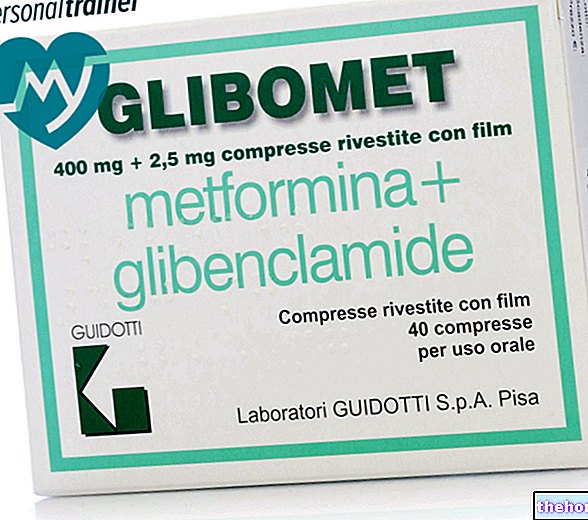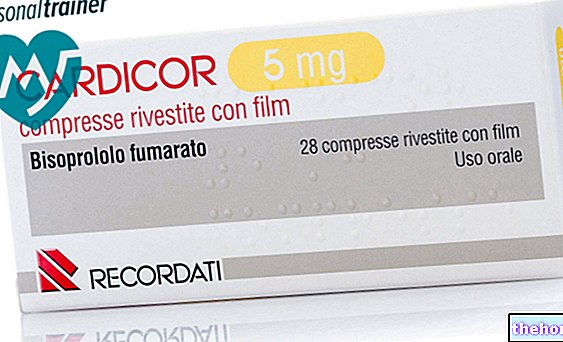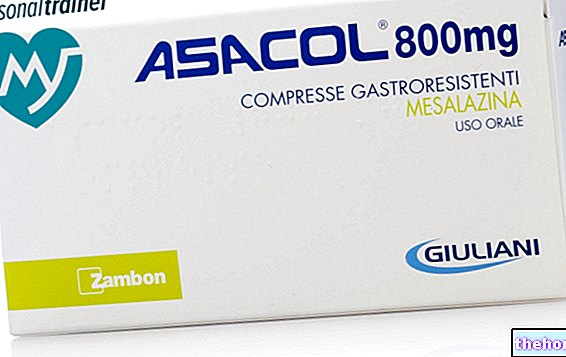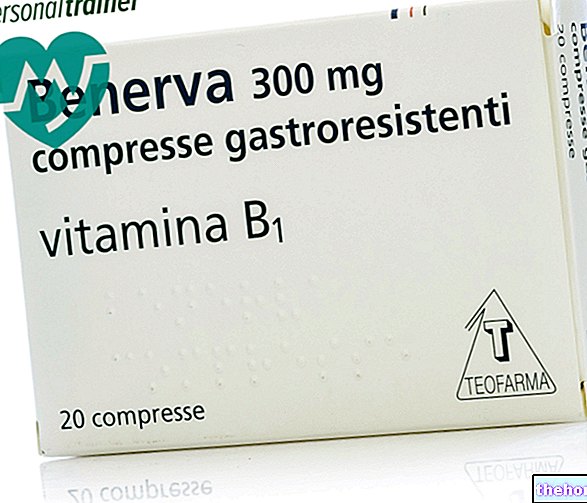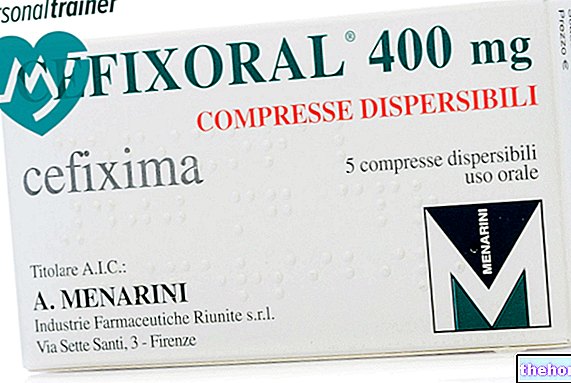Active ingredients: Dihydrocodeine (Dihydrocodeine bitartrate)
PARACODINA SYRUP 12 mg / 5 ml + 12mg / 5 ml syrup
Why is Paracodina syrup used? What is it for?
THERAPEUTIC INDICATIONS
Cough suppressant.
Contraindications When Paracodina syrup should not be used
Hypersensitivity to the active substance or to any of the excipients. Severe hepatocellular insufficiency, respiratory insufficiency, obstinate constipation.
Do not administer during or in the two weeks following treatment with monoamine oxidase inhibitors, or simultaneously with other drugs belonging to the analgesic-narcotic group.
The product is contraindicated in children under 2 years and during lactation.
Precautions for use What you need to know before taking Paracodina syrup
Follow the recommended doses scrupulously.
Not to be taken on an empty stomach.
Interactions Which drugs or foods can modify the effect of Paracodina syrup
Tell your doctor or pharmacist if you have recently taken any other medicines, even those without a prescription.
The effects of opium alkaloids on the central nervous system are enhanced by other depressant drugs such as sedatives, tranquilizers, antihistamines.
During the therapy it is not advisable to consume alcohol at the same time.
The association with other psychotropic drugs requires particular caution and vigilance on the part of the physician to avoid unexpected and unwanted effects from interaction
Warnings It is important to know that:
PARACODINA Syrup can be addictive.
Caution requires the use of the preparation especially at high doses and / or for long periods of time in the elderly as the opium alkaloids can cause an aggravation of a pre-existing symptomatology (brain disorders, difficulty in urination, etc.).
For diabetics and patients who follow low-calorie diets it should be borne in mind that a teaspoon of PARACODINA Syrup is equivalent to a glucose content of one gram.
This medicine contains 2.5 g of sucrose per dose (1 teaspoon).
To be taken into consideration in people with diabetes mellitus.
Pregnancy and breastfeeding
Ask your doctor or pharmacist for advice before taking any medicine.
As opiates cross the placental barrier, neonatal respiratory depression is possible.
During pregnancy and infancy the product should be used only in case of real need and under direct medical supervision.
PARACODINA Syrup must not be administered during lactation (see section "Contraindications").
Effects on ability to drive and use machines
Since drowsiness is not uncommon during treatment, those who may be driving vehicles or attending to operations requiring integrity of vigilance should be warned of this.
Dose, Method and Time of Administration How to use Paracodina syrup: Posology
Average doses (unless otherwise prescribed):
Adults: 1-2 teaspoons several times a day
Boys: 1/2 - 1 teaspoon several times a day
Children over 2 years: 1/4 - 1/2 teaspoon several times a day
One teaspoon corresponds to 5 ml (equivalent to 12 mg of dihydrocodeine bitartrate and 12 mg of benzoic acid).
PARACODINA Syrup should be taken after meals, either alone or, in case of need, diluted in water or other liquids.
In the treatment of elderly patients the posology must be carefully established by the doctor who will have to evaluate a possible reduction of the dosages indicated above.
Overdose What to do if you have taken an overdose of Paracodina syrup
The most important symptoms of opioid poisoning reported are: deep coma, decreased respiratory rate, drop in blood pressure, miosis, decreased diuresis, drop in body temperature, pulmonary edema. Emergency treatment provides, as a first step, an adequate restoration of the respiratory function.
The antidote of choice is considered to be naloxone which must be administered i.v. at a dose of 0.4 mg.
This dose can be repeated after 2-3 minutes. For children the recommended dose is 0.01 mg / kg.
In case of accidental ingestion / intake of an excessive dose of PARACODINA Syrup, notify your doctor immediately or go to the nearest hospital.
If you have any questions about the use of PARACODINA Syrup, ask your doctor or pharmacist.
Side Effects What are the side effects of Paracodina syrup
Like all medicines, PARACODINA Syrup can cause side effects, although not everybody gets them.
At therapeutic doses the most common undesirable effects are represented by sedation and / or somnolence, by gastrointestinal disturbances such as nausea, vomiting and constipation. Headache, dizziness, asthenia, agitation, especially in the elderly, have occasionally been described.
In case of overdose (such as in the "accidental intake of high doses) and in hypersensitive people, more severe signs of nervous depression and respiratory and cardiovascular function may appear.
Compliance with the instructions contained in the package leaflet reduces the risk of undesirable effects.
If any of the side effects gets serious, or if you notice any side effects not listed in this leaflet, please inform your doctor or pharmacist.
Expiry and Retention
Expiry: see the expiry date printed on the package.
The expiry date indicated refers to the product in intact packaging, correctly stored.
Warning: do not use the medicine after the expiry date shown on the package.
Store at a temperature not exceeding 25 ° C
Medicines should not be disposed of via wastewater or household waste. Ask your pharmacist how to throw away medicines you no longer use. This will help protect the environment.
Keep this medicine out of the reach and sight of children.
HOW TO OPEN THE BOTTLE
To open:
- Place the bottle on a flat surface
- Press the capsule onto the bottle and at the same time unscrew
To close:
- Screw the capsule back in completely
COMPOSITION
100 g of syrup contain:
Active ingredients: dihydrocodeine bitartrate 200.0 mg; benzoic acid 200.0 mg. Excipients: purified water, marshmallow extract, grindelia extract, glycerin, sucrose.
PHARMACEUTICAL FORM AND CONTENT
Syrup - 100 g bottle
Source Package Leaflet: AIFA (Italian Medicines Agency). Content published in January 2016. The information present may not be up-to-date.
To have access to the most up-to-date version, it is advisable to access the AIFA (Italian Medicines Agency) website. Disclaimer and useful information.
01.0 NAME OF THE MEDICINAL PRODUCT
PARACODINA Syrup
02.0 QUALITATIVE AND QUANTITATIVE COMPOSITION
100 g of syrup contain:
Active principles:
Dihydrocodeine bitartrate 200.0 mg
Benzoic acid 200.0 mg
For the full list of excipients, see section 6.1
03.0 PHARMACEUTICAL FORM
Syrup
04.0 CLINICAL INFORMATION
04.1 Therapeutic indications
Cough suppressant.
04.2 Posology and method of administration
Average doses (unless otherwise prescribed):
Adults: 1 - 2 teaspoons several times a day
Boys: ½ - 1 teaspoon several times a day
Children over 2 years: ¼ - ½ teaspoon several times a day
One teaspoon corresponds to 5 ml (equivalent to 12 mg of dihydrocodeine bitartrate and 12 mg of benzoic acid).
PARACODINA Syrup should be taken after meals, either alone or, in case of need, diluted in water or other liquids.
In the treatment of elderly patients the posology must be carefully established by the doctor who will have to evaluate a possible reduction of the dosages indicated above.
04.3 Contraindications
Hypersensitivity to the active substance or to any of the excipients. Severe hepato-cellular insufficiency, respiratory insufficiency, obstinate constipation.
Do not administer during or in the two weeks following treatment with monoamine oxidase inhibitors, nor simultaneously with other drugs belonging to the analgesic-narcotic group.
The product is contraindicated in children under 2 years and during lactation.
04.4 Special warnings and appropriate precautions for use
PARACODINA Syrup can be addictive.
Caution requires the use of the preparation especially at high doses and / or for long periods of time in the elderly as the opium alkaloids can cause an aggravation of a pre-existing symptomatology (brain disorders, difficulty in urination, etc.).
For diabetics and patients who follow low-calorie diets it should be borne in mind that a teaspoon of PARACODINA Syrup is equivalent to a glucose content of one gram.
Follow the recommended doses scrupulously.
Not to be taken on an empty stomach.
Ultra-rapid metabolisers and dihydromorphine intoxication
In about 5.5% of the Western European population, even at therapeutic doses, a higher amount of active morphine-like metabolics may be produced due to the high activity of the CYP2D6 enzyme (ultra-rapid metabolism). One case of morphine intoxication at ultra-rapid therapeutic doses of codeine with reduced renal function has been reported (see also section 5.2).
Symptoms of opioid overdose and its treatment are described in section 4.9.
A fatal case of morphine intoxication has been reported in a breastfed infant whose mother was an ultra-rapid metaboliser treated with codeine at therapeutic doses (see also section 4.6).
04.5 Interactions with other medicinal products and other forms of interaction
The effects of opium alkaloids on the central nervous system are enhanced by other depressant drugs such as sedatives, tranquilizers, antihistamines.
During the therapy it is not advisable to consume alcohol at the same time.
The association with other psychotropic drugs requires particular caution and vigilance on the part of the physician to avoid unexpected and unwanted effects of interaction.
04.6 Pregnancy and lactation
As opiates cross the placental barrier, neonatal respiratory depression is possible.
During pregnancy and infancy the product should be used only in case of real need and under direct medical supervision.
PARACODINA Syrup should not be administered during lactation (see section 4.3).
04.7 Effects on ability to drive and use machines
Since drowsiness is not uncommon during treatment, those who may be driving vehicles or attending to operations requiring integrity of vigilance should be warned of this.
04.8 Undesirable effects
At therapeutic doses the most common undesirable effects are represented by sedation and / or somnolence, by gastrointestinal disturbances such as nausea, vomiting and constipation. Headache, dizziness, asthenia, agitation, especially in the elderly, have occasionally been described.
In case of overdose (such as in the "accidental intake of high doses) and in hypersensitive people, more severe signs of nervous depression and respiratory and cardiovascular function may appear.
04.9 Overdose
The most important symptoms of opioid poisoning reported are: deep coma, decreased respiratory rate, drop in blood pressure, miosis, decreased diuresis, drop in body temperature, pulmonary edema.
Emergency treatment provides, as a first step, an adequate restoration of the respiratory function.
The antidote of choice is considered naloxone which must be administered i.v. at a dose of 0.4 mg. This dose can be repeated after 2-3 minutes. For children the recommended dose is 0.01 mg / kg.
05.0 PHARMACOLOGICAL PROPERTIES
05.1 Pharmacodynamic properties
Pharmacotherapeutic group: Opium alkaloids and its derivatives
ATC code: R05DA20
Dihydrocodeine bitartrate is a derivative of codeine which exerts a specific sedative action on the cough center located in the brain stem, thus reducing the frequency and intensity of coughing excesses.
Dihydrocodeine bitartrate exerts a minimal depressive action on the respiratory center.
Dihydrocodeine bitartrate eliminates the cough stimulus but does not suppress mucus expectoration.
Benzoic acid removes the thick bronchial mucus and facilitates the expulsion of phlegm.
05.2 Pharmacokinetic properties
The studies were carried out by administering, orally to adult male rabbits, PARACODINA Syrup and dihydrocodeine bitartrate at doses of 0.2 and 2.0 mg / kg.
The results obtained showed, for both drugs, a good absorption via the gastrointestinal tract with a blood peak about 2 hours after administration.
Special patient groups
Slow and ultra-rapid metabolisers of the CYP2D6 enzyme
Dihydrocodeine is metabolised primarily via glucuroconjugation, but via a minor metabolic pathway, such as O-demethylation, it is converted to dihydromorphine. This metabolic transformation is catalyzed by the CYP2D6 enzyme. About 7% of the population of Caucasian origin has a deficiency of the CYP2D6 enzyme due to genetic variation. These subjects are called poor metabolisers and may not benefit from the expected therapeutic effect as they are unable to transform dihydrocodeine into its metabolic active dihydromorphine.
Conversely, about 5.5% of the population in Western Europe is made up of ultra-rapid metabolisers. These subjects have one or more duplicates of the CYP2D6 gene and therefore may have higher concentrations of dihydromorphine in the blood resulting in an increased risk of adverse reactions (see also sections 4.4 and 4.6).
The existence of ultra-rapid metabolisers should be considered with particular attention in the case of patients with renal insufficiency in whom an increase in the concentration of the active metabolic dihydromorphine-6-glucuronide may occur.
The genetic variation related to the CYP2D6 enzyme can be ascertained by the genetic typing test.
05.3 Preclinical safety data
06.0 PHARMACEUTICAL INFORMATION
06.1 Excipients
Purified water, marshmallow extract, grindelia extract, glycerin, sucrose.
06.2 Incompatibility
None
06.3 Period of validity
5 years
06.4 Special precautions for storage
Store at a temperature not exceeding 25 ° C
06.5 Nature of the immediate packaging and contents of the package
Carton containing a glass bottle with a "child resistant" closure containing 100 g of syrup
06.6 Instructions for use and handling
How to open the bottle
To open:
Place the bottle on a flat surface
Press the capsule onto the bottle and at the same time unscrew
To close:
Screw the capsule back in completely
07.0 MARKETING AUTHORIZATION HOLDER
TEOFARMA S.r.l. - Via F.lli Cervi, 8 - 27010 Valle Salimbene (PV)
08.0 MARKETING AUTHORIZATION NUMBER
A.I.C .: n. 008096024
09.0 DATE OF FIRST AUTHORIZATION OR RENEWAL OF THE AUTHORIZATION
First authorization: 17.09.1953
Authorization renewal: 01.06.2005
10.0 DATE OF REVISION OF THE TEXT
Determination of 01/12/2008

